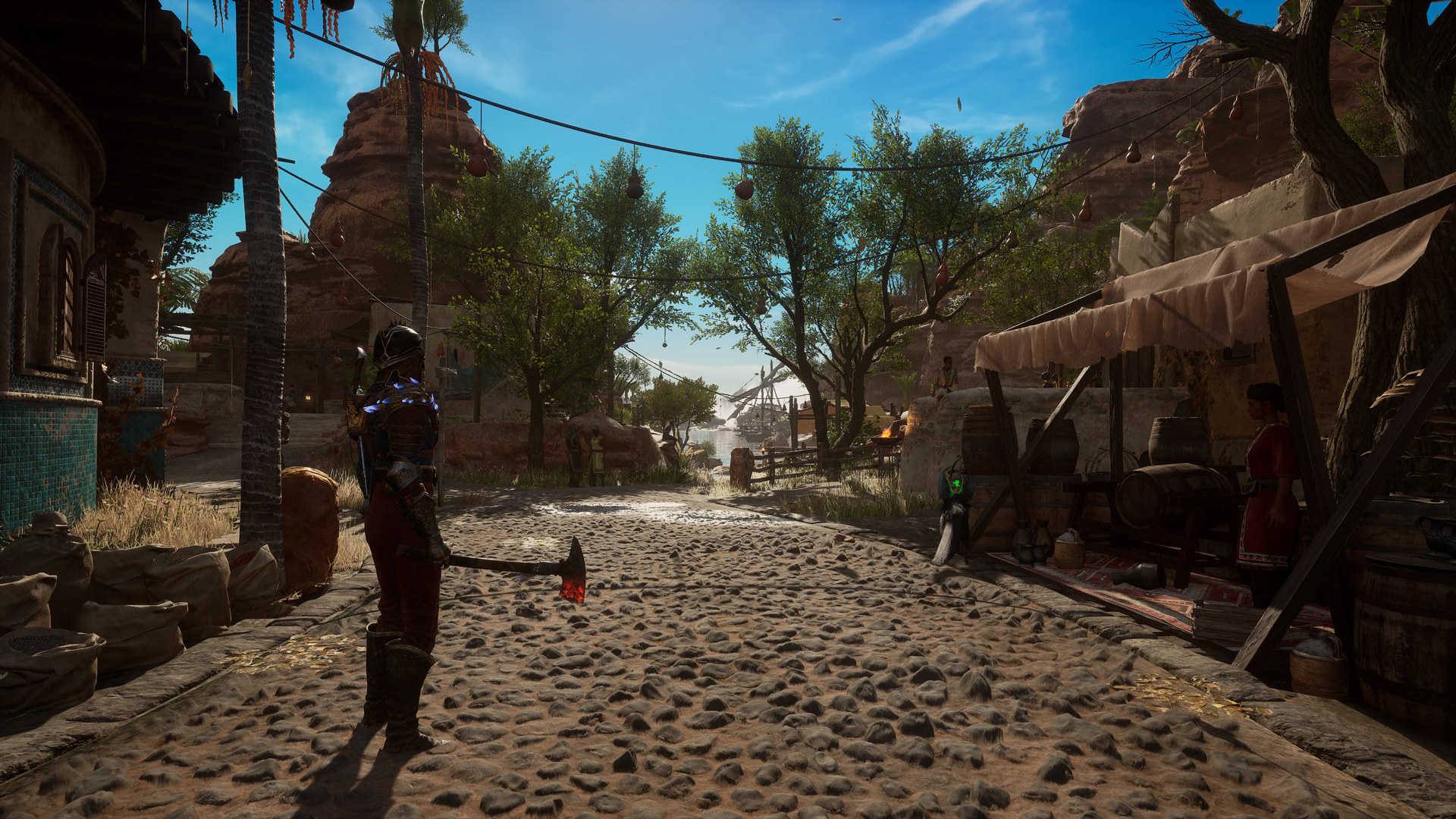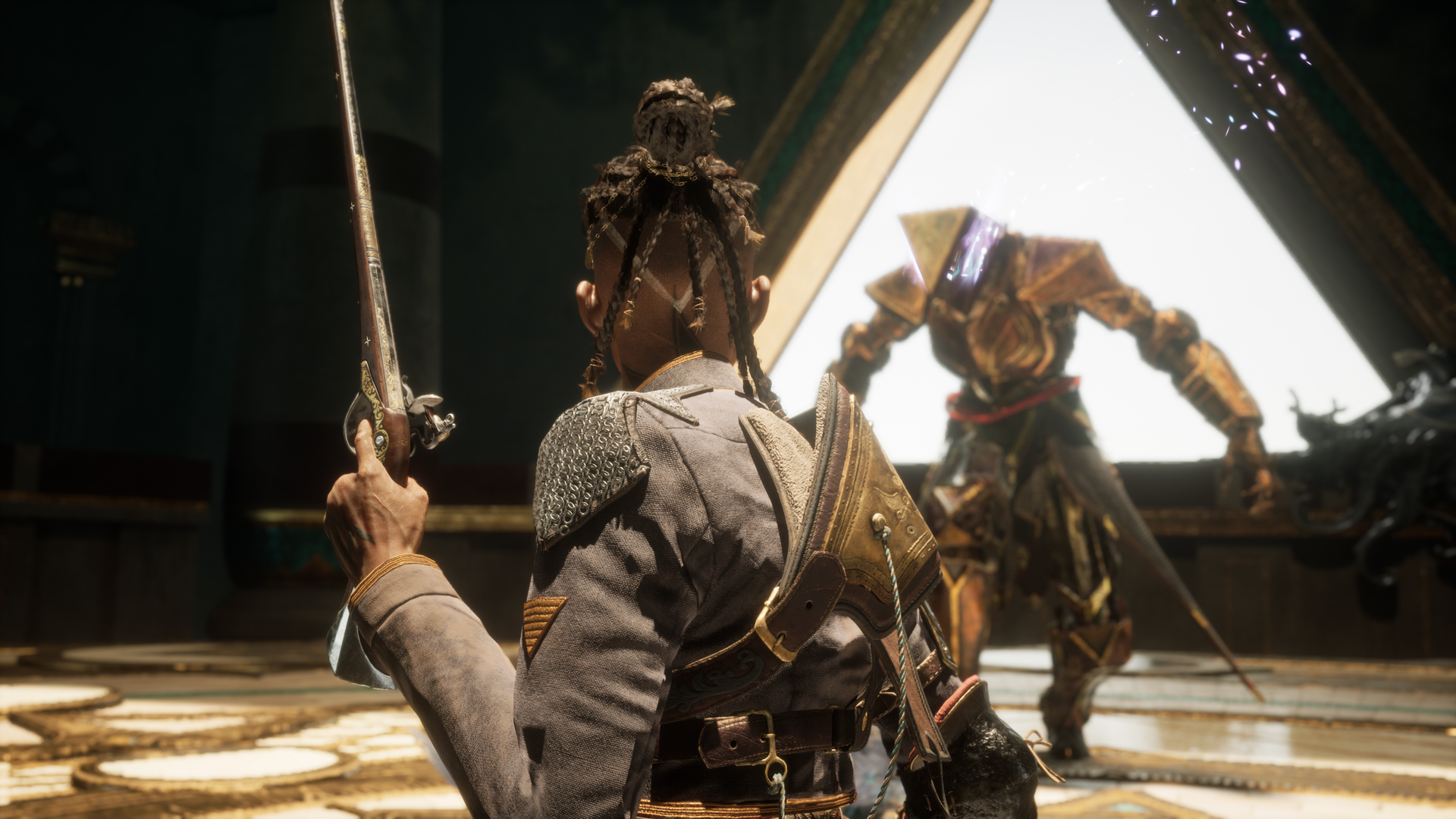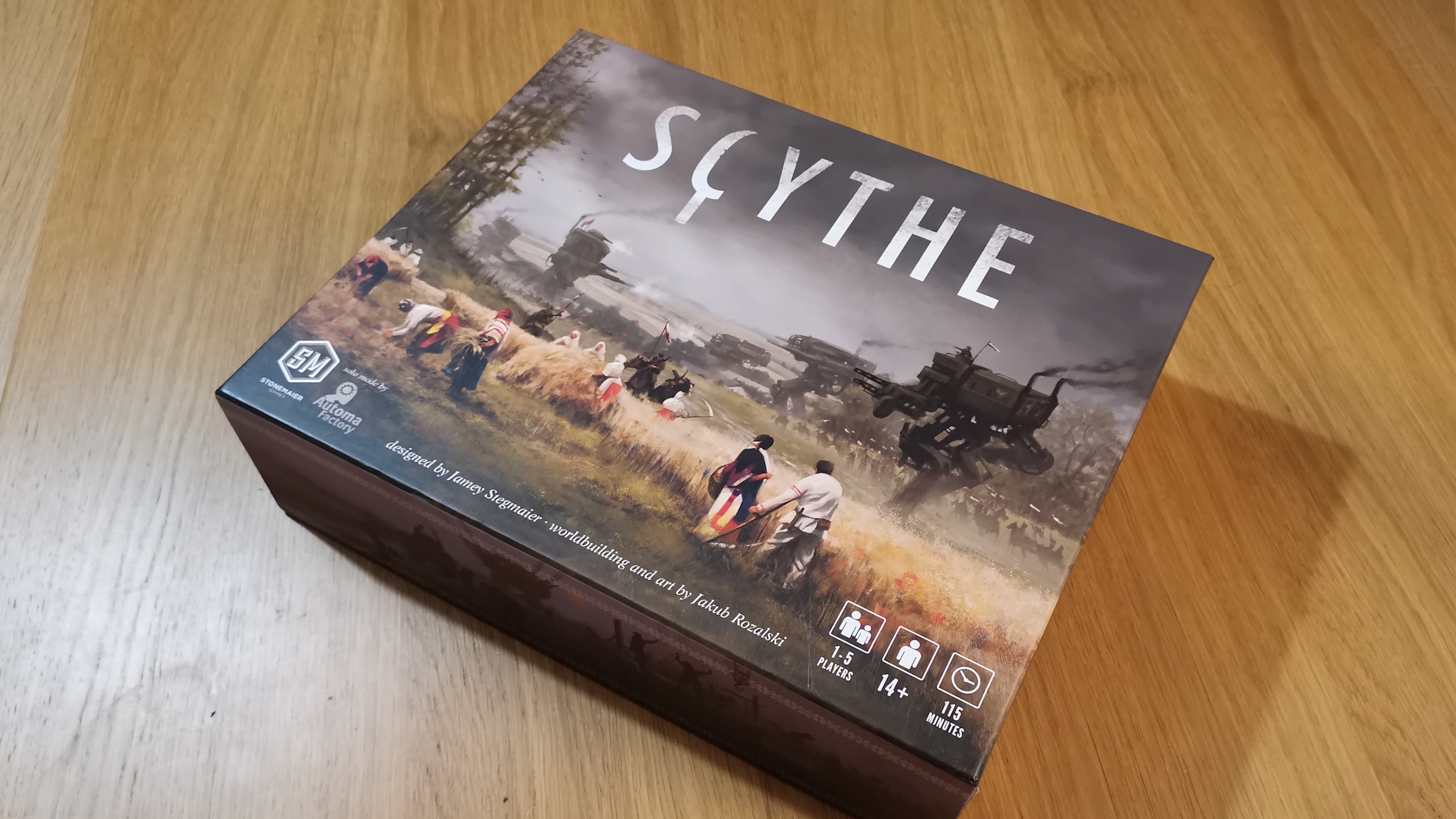GamesRadar+ Verdict
Flintlock: The Siege of Dawn is an action-RPG that delivers on most of its promises, along with some solid side content that is well worth indulging in – even if the full game isn't anything particularly remarkable.
Pros
- +
Strong boss encounters
- +
Engaging combat
- +
Solid character progression options
Cons
- -
Clunky Platforming Controls
- -
Low enemy variety
- -
Sometimes frustrating level design
Why you can trust GamesRadar+
In a year filled with massive RPGs, I'm glad that a game like Flintlock: The Siege of Dawn exists. While I loved some of the 80+ hour games that have been released since January, A44 Games' smaller-scoped Action RPG was just what the doctor ordered. That's not to say that the title is only noteworthy due to its length, of course. Flintlock brings several interesting ideas to the table when it comes to world design, combat, and how to blend the two together – culminating in an experience that doesn't quite feel like anything else on the market, even if you can feel traces of games like Sekiro: Shadows Die Twice and Star Wars Jedi within its game design.
Following up on the studio's previous work on Ashen, Flintlock is an Action RPG that borrows elements from FromSoftware's "Souls" formula. Upon death, players will lose all of their currency – called Reputation here – with a chance to retrieve it if you can reach where you'd died before succumbing to death yet again. Unlike its inspiration, however, combat is considerably faster paced in Flintlock: The Siege of Dawn. There's no stamina system to consider when either dodging or attacking, and you can both double-jump and dodge in mid-air without any consequences.
Building a Reputation

Release date: July 18, 2024
Platform(s): PC, PS5, Xbox Series X
Developer: A44 Games
Publisher: Kepler Interactive
This same agility is ever-present in how Flintlock: The Siege of Dawn's combat is designed; whenever you defeat an enemy, the Reputation you would've earned isn't immediately deposited to your inventory. Instead, it gets added to a base level of Reputation that can be cashed out at any time with an additional multiplier for performing unique feats during combat and traversal. Maybe you'll get a bonus for sliding down a slope, or for perfectly dodging an attack at just the right moment. Different attacks will also add to your combo multiplier, such as using your pistol, headshotting an enemy with your secondary firearm, and more. If you can keep a combo going, you stand to gain even more rewards when cashing out; but taking even a single hit will drop the combo, instantly awarding you the base level of Reputation that you can receive.
I'm of two minds about this system; on one hand, Flintlock: The Siege of Dawn gives you plenty of Reputation by playing the game normally in order to unlock most of the game's three intertwining skill trees, while still leaving plenty to upgrade any of your equipment that calls for Reputation in its enhancement. The problem comes with how certain enemy designs are executed, and how easy it can be to get sniped off-screen, or be taken unawares by an exploding foe waiting just around a corner – that can only be safely dealt with from a distance. It's less a problem with the system itself, but rather how it interacts with the game around it, for good or ill.
At its core, Flintlock: The Siege of Dawn's combat is equal parts proactive and reactive. Protagonist Nor has not just her axe and pistol at her disposal, but also Enki – an enigmatic god – along for the ride. You can call on him to curse enemies, allowing your attacks to build up a stagger meter which can eventually strip an enemy of their armor. You can block almost every attack, and even parry them with the right timing, but certain actions can only be deflected with Nor's pistol; ammo is limited, and replenishes with other attacks such as your axe or Enki's curse-bestowing pounces. When things get going – especially during the game's climatic showdowns with the Gods – the combat truly shines. Yet it's hard not to feel that the lacking enemy variety throughout the Flintlock's runtime mutes some of that same potential.
Acrobatic Antics

I've similar thoughts for Flintlock: The Siege of Dawn's level design. On one hand, there's a real verticality to how the land of Kian is designed, making good use of Nor's acrobatic antics. Regularly you'll be tasked with double-jumping and air-dashing throughout the world, and at the best of times there's a solid flow to progression found within each corner of Flintlock's three open-world zones. While it's not the most visually impressive game I've played this year, Flintlock also has its moments where the vistas impressed me in their scope; especially with how certain landmarks work to draw the player to specific locations. Along the way, Rifts can be found and activated which offer both a shortcut between checkpoints and areas further along the critical path, and additional vantage points for platforming.
The problem is less with these Rifts – I generally found them to be a welcome addition – and more how platforming can feel with their absence. While Nor's double-jump and air-dash are mechanically useful, they don't always feel the best in practice. There's a floatiness to her movements while her feet are off the ground; the best way to put it, is that it sometimes feels like you're doing something wrong with your platforming, even if you are not. Rifts offer an extra bit of momentum when leaving them, which goes a long way to making your jumps and dashes feel that much more impactful. Without that impact, platforming ends up feeling almost a bit limp at points. I wouldn't go as far as to say that Flintlock: The Siege of Dawn's movement feels bad, but at the same time I wish it had felt just a bit tighter in motion.
Weekly digests, tales from the communities you love, and more
That same sentiment can be extrapolated for much of Flintlock: The Siege of Dawn. The story's premise – the mythical door between the living and the dead has been breaking down for the last 10 years, and humanity is besieged by an undead horde – is fascinating, but outside of key moments there's very little build-up for the world and how exactly it got to this state. Most of the major story beats, where Nor and Enki learn more about each other, are found after the game's handful of boss fights; to make matters worse, it only ever felt like it was their friendship that was truly explored. All of the characters that eventually join your camp have an introduction and one sidequest to their name, with not much else in terms of showcasing their history or motivations.
Off the beaten path

One area where Flintlock: The Siege of Dawn truly shines is in its side content; discovering Inaya Shrines to increase Nor's max health, Enki's shedded feathers to improve his effectiveness in combat, and clearing out Hamlet's in order to unlock more sidequests as well as additional healing charges. Flintlock's game world is smaller than I expected; it took me a mere 10 hours to reach the credits with most of the side activities checked off my list. I'd argue that's more of a boon than anything else, though, as what exists always has some impactful reward. Whether that's a new piece of equipment, a new ultimate ability for Enki, or so on. Some of the additional weapons you can discover are genuinely game-changing, like a flamethrower that can replace your secondary firearm.
By the end of Flintlock: The Siege of Dawn I had plenty of toys to mess around with, yet at the same time there isn't all that much need to make use of the equipment. There are only four major bosses in the game, and a similar number of Revenant mini-bosses. Deviating from your existing gear can be costly, too, because resource points within the environment do not replenish. Once you've exhausted a certain resource, you will be unable to further upgrade any equipment that calls for that resource in your playthrough.
To Flintlock's credit, with its shorter runtime, there's an argument to be made that these additional playstyles could always just be explored in a repeat playthrough. Even with the friction points I experienced, I could easily see myself revisiting the game down the line. Flintlock: The Siege of Dawn mostly delivers where it counts. With its strong combat, generally enjoyable platforming, and engaging world – A44 Games has crafted an Action RPG that may even be worth returning to for seconds; even if the heights that the game reaches are never quite as impressive as I might have hoped.
Flintlock: The Siege of Dawn was reviewed on PC, with a code provided by the publisher.

James Galizio has been writing about gaming and technology from LA since 2014, and has contributed to outlets such as RPG Site, Nintendo Insider and more with a special focus on PC gaming and Japanese RPGs. Graduating from the University of California, Irvine in 2021 with Bachelors in English he has covered events such as E3, Tokyo Game Show and more as he hopes to help shine a light on games both big and small. If he’s not writing about an upcoming or recently released RPG, you can probably find him playing Monster Hunter or some random game that might have recently been released in Japan.



